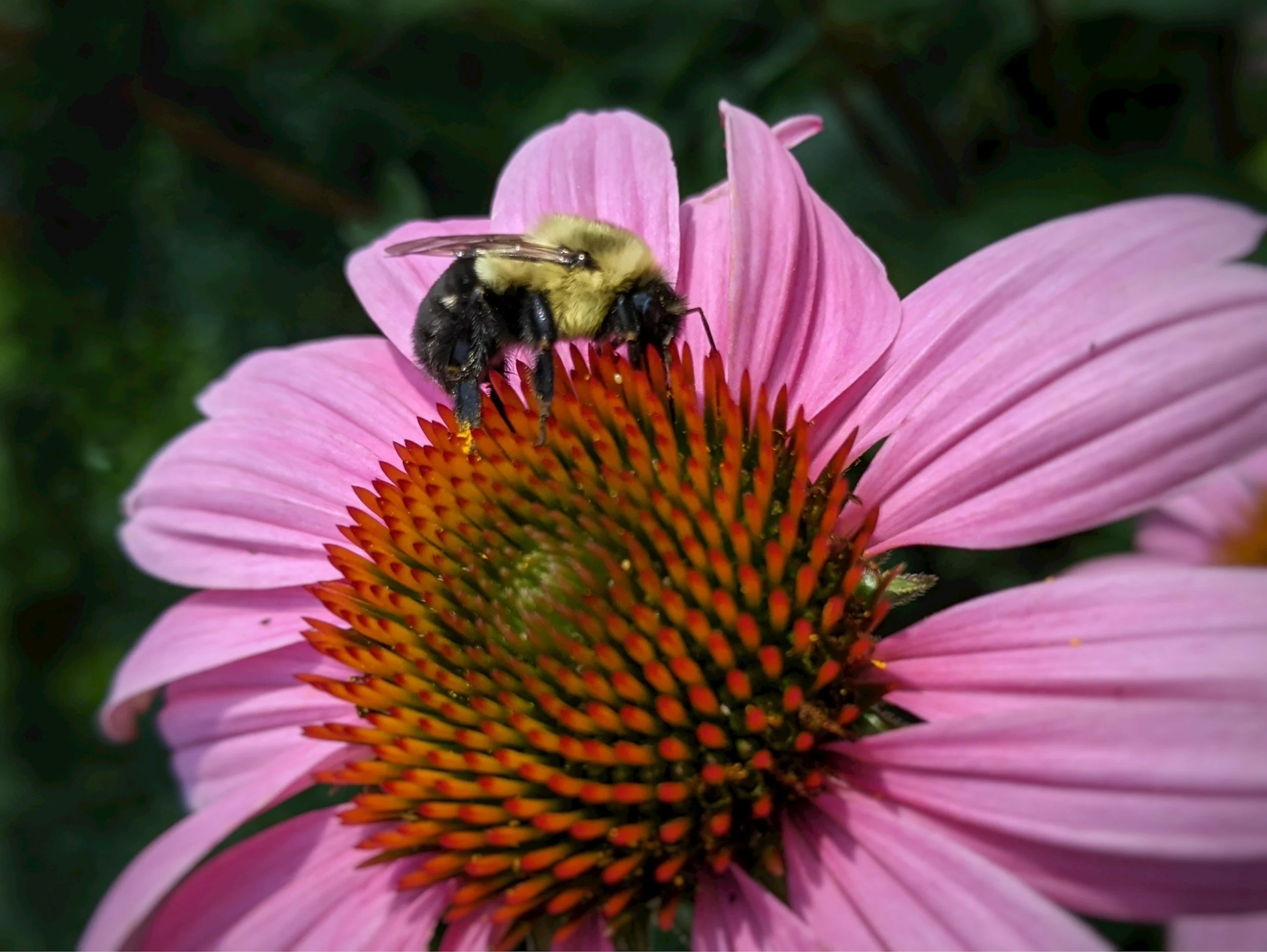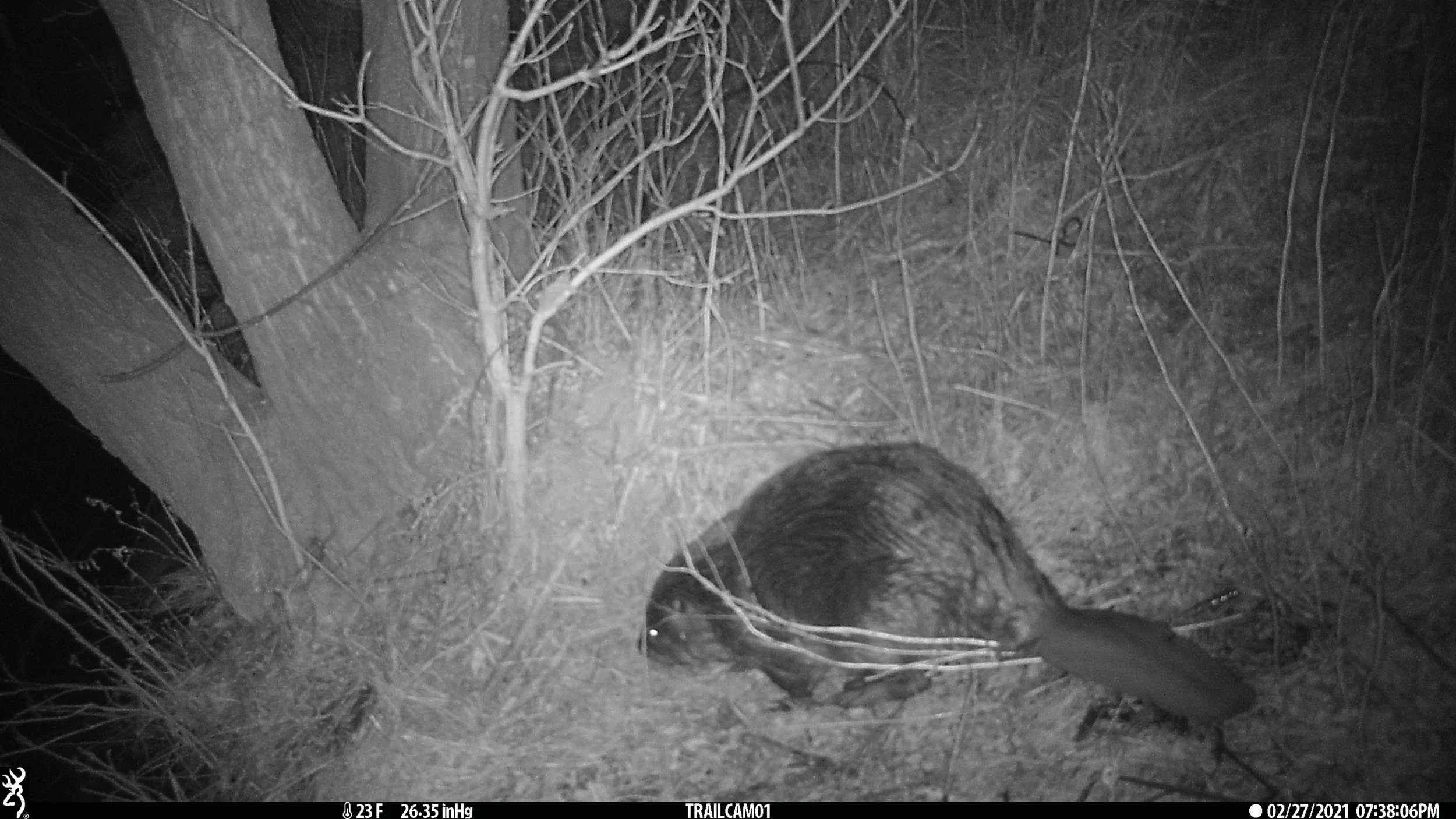Beavers & Bumblebees
Last week, our team completed its second and final survey for the Great Plains Bumblebee Atlas in 2024. Despite the sudden cloud cover and strong breeze, the team caught nearly 20 bumblebees during the short survey (several of which included the American Bumblebee (Bombus pensylvanicus), which is of special conservation concern due a severe decline in their population)! The survey took place on a partner site, Re-Member’s Feather 2 Farms, which is a beautiful 160 acre regenerative incubator hub farm on the Pine Ridge Reservation. The property checks all the boxes for bumblebee habitat: abundant wildflowers, limited mowing and haying, accessible water from Porcupine Creek, zero pesticide and herbicide use, and unlimited nesting areas from pine duff, bunch grasses, rodent holes, leaf litter, and rock piles. Yet, despite this “perfect picture”, the property hasn’t always been abundant with pollinators.
In its 100 years of agricultural use, Feather 2 Farms has seen haying, cow-calf grazing, mowing, and other “conventional farming” practices used on the Great Plains in the past two centuries. In recent years, the property has been co-managed by Re-Member and the SDSU Extension Tribal Local Foods Program, who have both implemented pesticide-free, regenerative management practices and have valued farming and gardening techniques that improve biodiversity. But when speaking with SDSU employees, it’s clear that bumblebees have boomed on the land only recently: “Bumblebees have always been here, but it’s only the past few years that we’ve seen this many bumblebees all throughout the property.” One could argue that the bumblebee boom is due only to the culmination of regenerative practices that have been implemented over the years, but our team believes there is a player missing to the story- Beavers.
One of Feather 2 Farms' "resident" beavers
The North American Beaver (Castor canadensis) has been a hot topic in conservation circles lately. As more and more people become aware of their inherent benefits to ecological systems, more and more people become self-proclaimed “Beaver Believers”. Beavers have been living on Feather 2 most likely since Porcupine Creek, the stream that weaves through most of the property, has carved its way into existence. Unlike stereotypical beavers, our local Feather 2 beavers do not create stick lodges, but instead utilize bank dens and tunnels that carve into sides of the creek. They build dams out of mud, willow branches, grasses, cottonwood limbs, cedar limbs, and cattails to create ponds that hide the entrances to their dens. Since Rebel West has begun beaver-related projects on Feather 2, presence of their dams and dens has nearly tripled in the past several years.
But, how does this affect bumblebees? As beavers build dams and carve tunnels and canals into a creek, they slow and obstruct the flow of water and trap more sediment and nutrients that would otherwise flow downstream. As the water moves more slowly across the land, it is absorbed more easily, thus raising the water table. This increase in available water and nutrients creates “green zones” on the otherwise dry plains, providing a stable and nutrient-rich bed for the wildflowers that bumblebees depend on. In addition to increasing water, beavers naturally practice “coppicing”- a forest management method that involves cutting trees down to encourage the re-growth of shoots from the trunk. The dead wood and leaves piled up as a result of beaver activity, as well as the shrubby re-growth that forms from beaver coppicing, create excellent hidey-holes for bumblebee nesting areas. As conservation practitioners, scientists, and naturalists discuss the importance of pollinators, it is critical that we support the furry little eco-engineers that have been “Saving the Bees” since the very beginning.
Our team has noticed the positive correlation between beavers activity and local bumblebee populations, but are working on a project for 2025 that will take data and help prove our anecdotal evidence! If you are interested in supporting us in this project, or if you have any thoughts or questions, please contact us at info@rebelwest.org.
If you’d like to participate in bumblebee surveys, or have found a bumblebee nest that you’d like to report, please check out bumblebeeatlas.org!


